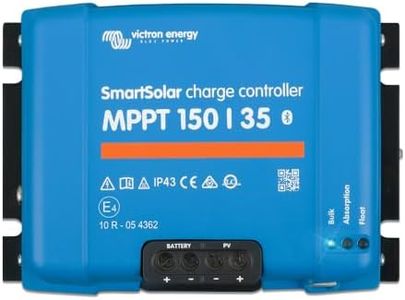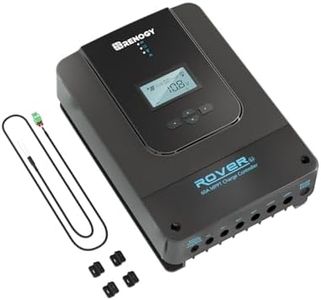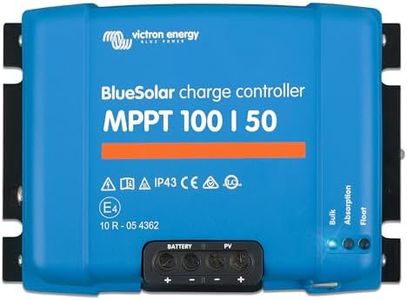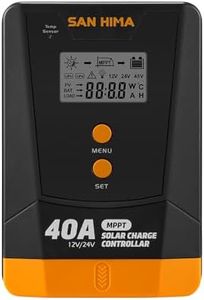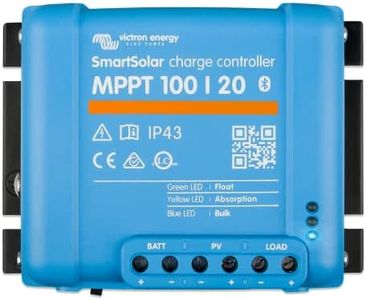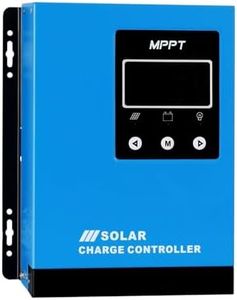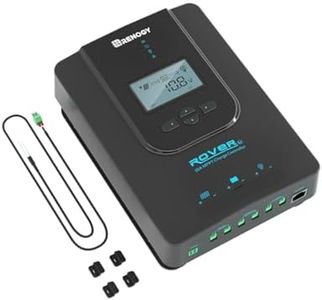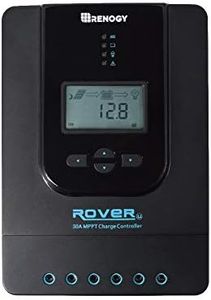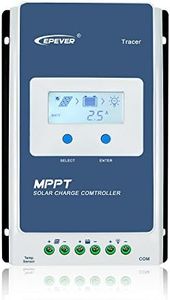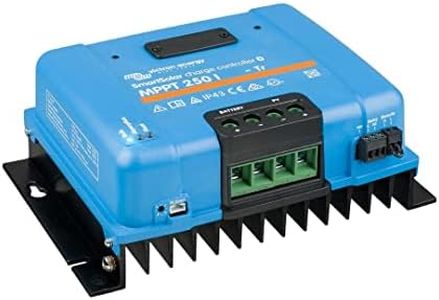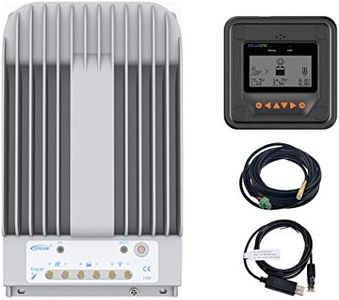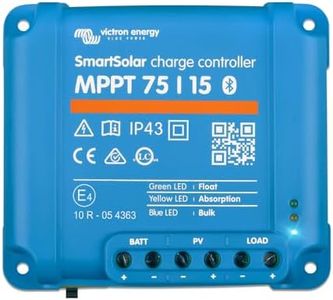We Use CookiesWe use cookies to enhance the security, performance,
functionality and for analytical and promotional activities. By continuing to browse this site you
are agreeing to our privacy policy
10 Best Solar Controllers
From leading brands and best sellers available on the web.Buying Guide for the Best Solar Controllers
Choosing the right solar controller is crucial to ensuring your solar power system runs efficiently and your batteries are protected. A solar controller, also known as a charge controller, is the device that manages the power flowing from your solar panels into your battery bank, preventing overcharging and extending battery life. To make an informed decision, focus on understanding your energy needs, your solar panel setup, and the type of batteries you’re using. By paying attention to the most important features and specs, you will be able to select a controller that keeps your system running safely and smoothly.Controller Type (PWM vs MPPT)The type of solar controller refers to the way the controller manages the electricity from the panels to the batteries. There are two main types: PWM (Pulse Width Modulation) and MPPT (Maximum Power Point Tracking). PWM controllers are simpler and generally suitable for smaller systems where efficiency is less critical, while MPPT controllers offer higher efficiency, especially in larger or more variable solar setups. If you have a small system with panels and batteries at similar voltage, PWM can be sufficient. For larger systems, or if your panel voltage is much higher than your battery voltage, MPPT offers better performance and is worth considering.
Current Rating (Amperage)The current rating tells you how much current (in amps) the controller can handle from your solar panels. It is important because exceeding the current rating can damage the controller. Controllers are typically divided into different size segments: under 20A for small setups, 20–40A for medium setups, and over 40A for large arrays. To pick the right size, calculate the total current your panels can produce and choose a controller that can safely handle a bit more than this value to allow for unexpected power spikes or future expansion.
System VoltageSystem voltage refers to the voltage of the battery bank your controller is designed to work with, commonly 12V, 24V, or 48V. Some controllers support only one voltage, while others are ‘auto-detect’ and can work with several voltages. Matching the system voltage ensures safety and compatibility. Choose a controller that supports your battery bank’s voltage—most small solar setups use 12V, while larger ones may use 24V or 48V to keep currents lower and improve efficiency.
Battery CompatibilityBattery compatibility means the types of batteries your controller can work with, such as Lead Acid (Flooded, AGM, Gel) and Lithium. This matters because each battery type has different charging requirements. Not all controllers support all battery types. If you already have batteries, make sure your controller supports them; if you plan to change batteries in the future, look for a controller with wider compatibility for better flexibility.
Display and Monitoring FeaturesThe display and monitoring features indicate how much information you can get about your solar system’s performance. Some controllers have simple LED indicators, while others include LCD screens or smartphone app connectivity to let you monitor voltage, current, and charging status in detail. If you want a clear view of how your system is working or need data for maintenance, look for a controller with a good display or remote monitoring options. If you prefer a 'set and forget' approach, a basic display may be sufficient.
Protection FeaturesProtection features refer to built-in safeguards such as overcharge, over-discharge, short-circuit, and reverse polarity protection. These features are important because they keep your batteries and overall system safe from damage. More advanced controllers will offer better and more comprehensive protections. Think about your installation environment and your desire for peace of mind—if you want to leave the system unattended, robust protection is especially important.
